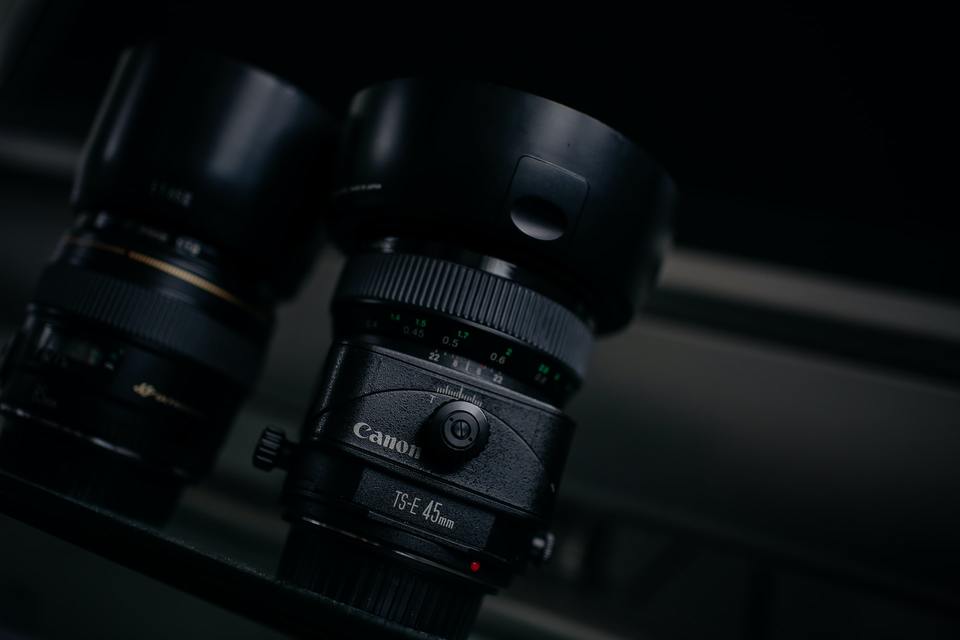
As an Amazon Associate we earn from qualifying purchases.
Taking real estate photos can be quite demanding because you might encounter large-scale properties or towering structures. In such cases, you need a different kind of lens to get the best shot, which is why I'm going to teach you the best way to use a tilt-shift lens for real estate
Quick Navigation
In general, using a tilt-shift lens requires tilting the lens up or down or shifting from left to right. As you control the tilt and shift, the focal length would run through varying distances, and the movements would correct the perspective in your real estate images.
Before I look into exact ways on how to control tilt-shift lenses for real estate
A tilt-shift lens is a type of specialized lens that contains optics you can tilt and shift. This is better than wide-angle lenses in some cases because it changes the scale of focus to keep your lines straight and massive spaces broad without ruining the perspective in images.

It enables you to change lens orientation instead of physically changing the camera's position. This is why a tilt-shift lens is mainly used for landscape, architecture, and real estate
Although there are no lens profile in Lightroom, the perspective control of tilt-shift lenses can help you save more time in post-production. However, you can only do manual focus in tilt-shift lenses because they lack autofocus systems.
Using a tilt-shift lens all boils down to knowing how you control the tilt and shift knobs because the movements are impossible to do with standard lenses.
Aside from many tutorials on how to use tilt-shift lenses, practice these various movements and see how a tilt-shift lens can create different effects in your real estate images.
When you use a typical lens, the depth of field and the focal plane will fall on distance. As a result, there would be a noticeable line of focus in an image, while the rest of the scene suffers from distortion.
Whether you tilt or shift, there are many great benefits to learning how to control a tilt-shift lens.
The tilt feature uses the Scheimpflug Principle, which means the image sensor and lens plane are not parallel. Unlike a tilt-shift lens, a standard lens features parallel focus and sensor planes. Since your camera would be steady, vertical lines won't converge.
One of the benefits of a lens tilt is that your camera can get a much higher view. When taking photos of vast neighborhoods or multi-complex properties, tilting creates a shallower depth of field, which can make a miniature effect on images.
For example, suppose you photograph a scene or object at an angle between 0 and 90 degrees with a normal lens. The nearest and farthest regions would be out of focus even if you use the narrowest aperture.

The shift feature lets the optics 'shift' compared to the image sensor plane. In effect, this type of lens allows you to shoot a photo while keeping the necessary camera position.
One of the challenges of real estate
With a tilt-shift lens, you can face the camera straight ahead and allow the lens to move for you. The same idea applies when photographing in tight spaces or reflective surfaces. You can shift the lens from left to right to get a shot.
The ideal shooting height for real estate
A tilt-shift lens is heavier and larger than standard lenses. Additionally, it generally has fixed focal lengths, so you can't zoom in or out. It can be a bit hard to control at first, although with practice and knowledge, you can optimize its different features.
Specialty lenses like tilt-shift are more expensive than standard lenses because of their extra flexibility and features. However, investing in them can help improve your images, and eventually, get higher-paying
A tilt-shift lens maintains the scale of focus and control perspective over the entire frame without blurring out the other parts. Once you master how to control it, you will have a better way of covering different distances even if you don't reposition your camera setup all the time.

There have been many good books written on the subject of using a view camera over the years, the principles are the same; but to agree with Larry, recent articles and YouTube are really good resources. Mike Kelley spends some time discussing the benefits of a tilt shift (and how to use them) in his most recent video tutorial on F-Stoppers as well.
Practice is going to be your best friend in learning how to make the best of your sizeable investment in lenses. You'll find that you're using the shift function a lot, but not the tilt function. Tilt and swing are most often used to correct focus, but the effect is more subtle and can often be covered by using the depth of field of a higher f-stop. But don't worry, the shift function is worth its weight in gold and makes these lenses indispensable. Keep your camera level and shift...your lines will be straight and you'll have a lot less time spent correcting in post production.
Congratulations on your wise choice of equipment and your willingness to invest in it. You have marvelous lenses!
I'd like to offer an alternate view on camera height.
With a normal or non-TSE lens you must keep the camera sensor plane parallel to the walls to keep vertical lines straight.
This means the camera must be placed in the vicinity of halfway between the floor and the ceiling to get straight verticals without corrections in post production.
I prefer a higher camera angle than counter height because I want to look down on the counters to better see their shape as opposed to looking across them.
The average human eye level is between 5 foot and 6 foot and that is where my camera height usually lives.
This provides the viewer with the camera height perspective they would experience when walking into the room you are photographing.
One of the great benefits of a TSE lens is that it frees you to go with higher or lower altitudes than a "normal" lens and correct the verticals on camera.
You must still keep the sensor parallel to the walls but you are free to use any camera height that makes sense to you.
All you need to do is pick your camera angle, level the camera and then shift to perfect your composition vertically.
Minimal corrections are best. The further you shift the sooner will get distortion and focus issues. You must watch closely about how far you can shift before encountering harm to your image quality.
If you can't fully correct your verticals without image degradation, correct as much as you can and finish the job in post production.
Question: Do you get better or different results using a TS lens as opposed to correcting perspective in post using software? Seems like you would still need to keep your camera perfectly level with the TS lens -- spending a bit more time on site.
You don't have to crop the image when using a TS lens... You do in post... The more you correct the more pixels you shed... A 17 can effectively become a 24.
Doesn't really take more time on site if you are already using a tripod.
"With a normal or non-TSE lens you must keep the camera sensor plane parallel to the walls to keep vertical lines straight.
This means the camera must be placed in the vicinity of halfway between the floor and the ceiling to get straight verticals without corrections in post production."
this is not true.
You can shot at low level or close to the ceiling and still get straight verticals when you keep the sensor plane parallel and straight. The only difference will that you will either get a lot more of "unwanted" floor/ceiling in the image. That's why you usually try to keep it halfway between floor and ceiling to get a good balance.
With a T/S you can shoot for example at very low perspective and shift up and still get a well balanced and pleasing image.
OK Sebastian... How about I add the phrase... "to achieve a desirable and balanced vertical composition"...
"This means, to achieve a desirable and balanced vertical composition, the camera must be placed in the vicinity of halfway between the floor and the ceiling to get straight verticals without corrections in post production.”
Am I being truthful now?
There are a bunch of good tutorials on TS lenses on YouTube. Tilt can be great for kitchens when you want to be higher than an island or counter yet still need to keep verticals correct. Mike Kelley shows some great technique with a TS lens where he is using "swing" to get a very nice composition. Shift is a good way to capture a large room without parallax issues. Shift the lens all the way in one direction, take an image, and then shift the lens all the way to the other side for an image and combine both in PS or LR. Since the move is a straight shift, you don't need to use a nodal mount set for the focal length of your lens. There are combinations of moves that can help direct a viewers eye that will come with more experience.
TS lenses typically take more time to use, so for regular RE listing work, they could be more bother than they are worth. If you are getting more higher end work where you are charging more per job, a TS lens can be a formidable tool in your bag to get images your competition can't touch.
Hi All, this is one of the best videos I've seen on T/S lenses. Enjoy!
https://www.youtube.com/watch?v=3qo3nYcDCuc
And to answer @MichaelAllen's question: It's not so much a question of correcting perspective but it the ability to be able to shift the lens view up or down while mainting the same perspective. All you are really doing is changing the amount of ceiling or floor in basic operations. Its also a complete game changer at ground level when you need to photograph a high rise building and shiftting the T/S up....thus cutting out the majority of foreground and being able to include the top of the buidling....which you can not do with a normal lens in vertical image {portrait} aspect. There are more advanced operations with a T/S like a sideways shift and a diagonal shift.
Here's a blog post I wrote a while back {with some great visual examples} on the 17mm T/S from Canon on a Sony mirrorless. I've since purchased the 24mm T/S and can do just about 95% of my RE and Architectural shoots with it.
Enjoy! https://luxuryrealestateimages.com/canon-17mm-tilt-shift-lens-review/
I want to photograph my remodeled house.
Now I see how a t/s brings flexibility to imaging an interior.
This link is an immense help, so thanks to all!